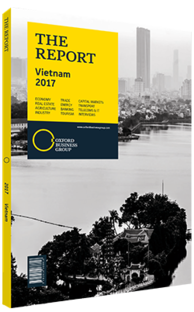Real estate
Vietnam has an exceptionally high GDP growth rate, but the prosperity has not spread across the country. GDP per capita in the two biggest cities, Ho Chi Minh City and Hanoi, reached $2000 in 2007 and 2010, respectively, in each case marking the first boom in real estate. Since then, GDP per capita has increased by 13% per year in both cities, while the population has increased at a compound annual growth rate of around 3%. Since then, the economies of these two cities has quadrupled, with an emerging middle class of 3m households. Real estate prices in central Hanoi and Ho Chi Minh City increased by 3-4 times in the period, while land prices in suburban areas surged by 10-20 times due to rising urbanisation.
Growth Landscape
However, the growth landscape is changing, as Ho Chi Minh City’s government wants to limit the population to around the current level so as to enable a better control of infrastructure and living standards. Moreover, labour costs in these cities are now too expensive for manufacturing plants, and foreign direct investment (FDI) is thus spreading to other secondary provinces, including Hai Phong, Bac Ninh and Thai Nguyen in the north, and Dong Nai and Binh Duong in the south. As a result, these new industrial centres have surpassed the two cities in term of GDP and population growth.
Meanwhile, new consumption patterns among the emerging middle class is also creating demand for new resorts along Vietnam’s coast line from Quy Nhon, Nha Trang and Mui Ne to Phu Quoc.
Up North
In the northern cities, property prices are not low in comparison to the economic level, and this is supported by a saving culture in the northern area where owning a house is considered a high priority. Moreover, these cities are not new, and their residents have accumulated remarkable wealth which allows the property market to record healthy growth. In addition, the government prioritises infrastructure investment in this area, which creates new opportunities in the real estate market. Big local developers, including Vingroup and Sungroup, are expanding their investment there.
Down South
In the southern cities, property prices are remarkably lower, while apartment, office and other high-rise construction has not been popular. The growth is significant, with Dong Nai’s and Binh Duong’s labour force increasing by 200, 000-300,000 people every year. Industries are extremely active here, with many companies of different sizes present and balanced growth. Binh Duong province even moved its centre to a new city, so that it can benefit from a smart city with well-organised public services. However, it will take more time for workers to actually settle down and accumulate wealth to develop a thriving real estate market in these areas.
Hospitality Property
For hospitality property, there is a growing supply of second homes, and owning one is becoming increasingly popular. Local investors, however, are still seeking yields rather than searching for a new lifestyle. Developers usually have to commit to minimum yields and other criteria.
Hospitality industry growth was extremely good in 2016, with foreign visitors increasing by 25% to 10m while local tourists surged to 60m. Hotel, villa and other hospitality facility room-occupancy ratios are rising although the number of facilities has grown, and they offer investors good yields.
We are seeing big changes in Vietnam’s property market with a growing middle class which is estimated to expand by one-third to 44m people by 2020 and account for 50% of Vietnam’s population. Increases in disposable income, shifts in consumption patterns and wealth accumulation are creating huge opportunities for the property market. Moreover, the mortgage market has just started taking off in past several years, and households remain generally underleveraged. This creates a sound base for further growth in the country’s property market.
You have reached the limit of premium articles you can view for free.
Choose from the options below to purchase print or digital editions of our Reports. You can also purchase a website subscription giving you unlimited access to all of our Reports online for 12 months.
If you have already purchased this Report or have a website subscription, please login to continue.

